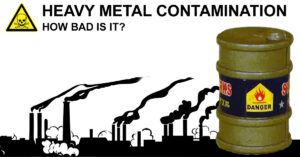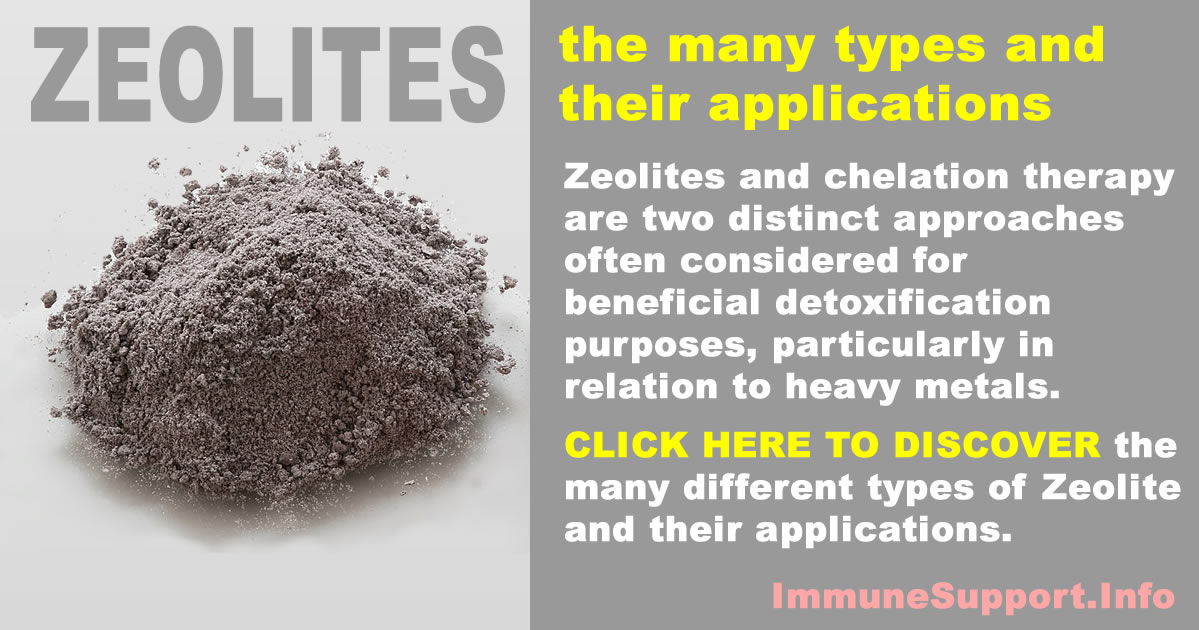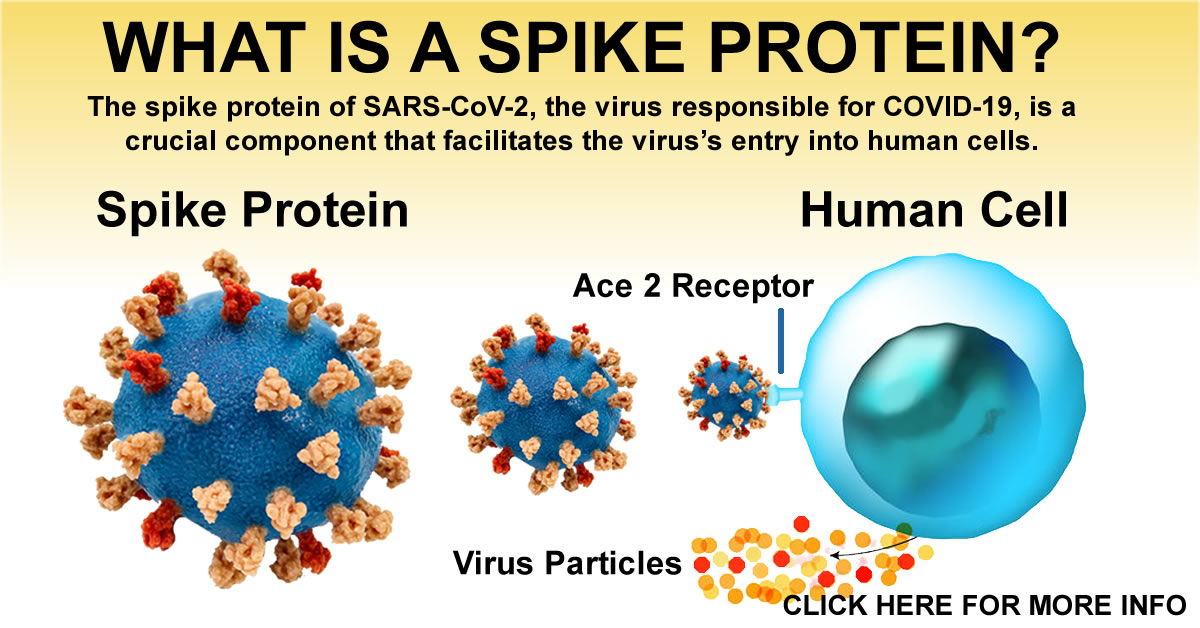
Heavy Metal Toxicity.
What are the most common heavy metals found in the body and what illness or conditions can they cause.
 The primary route for living organisms to be exposed to heavy metals is through the contamination of the food chain. Agricultural soil becomes contaminated with metals primarily through irrigation using water polluted by industries and sewage treatment plants. Prolonged use of this wastewater leads to the accumulation of heavy metals in the soil and crops. This accumulation can impair soil health, diminish the nutritional value of vegetables, harm crop growth, and contribute to the contamination of the food chain[i]–[ii]. In one study non-alcoholic beverages were tested that are commercially available across the country. Twenty-five heavy metals were found in all of the beverages tested[iii].
The primary route for living organisms to be exposed to heavy metals is through the contamination of the food chain. Agricultural soil becomes contaminated with metals primarily through irrigation using water polluted by industries and sewage treatment plants. Prolonged use of this wastewater leads to the accumulation of heavy metals in the soil and crops. This accumulation can impair soil health, diminish the nutritional value of vegetables, harm crop growth, and contribute to the contamination of the food chain[i]–[ii]. In one study non-alcoholic beverages were tested that are commercially available across the country. Twenty-five heavy metals were found in all of the beverages tested[iii].
Heavy metals are metals with high atomic weights and densities, and some of the most common ones found in the body include lead, mercury, arsenic, cadmium, and chromium. These metals can accumulate in various tissues and organs over time, leading to a range of health problems. Here are some of the most common heavy metals found in the body and the illnesses or conditions they can cause:
Aluminum toxicity: Aluminum poses significant dangers to neurological function, primarily due to its ability to accumulate in various tissues, including the brain. The entry of aluminum into the central nervous system can disrupt cellular processes and lead to neuronal dysfunction. One of the most concerning aspects of aluminum toxicity is its potential role in the development or exacerbation of neurodegenerative diseases such as Alzheimer’s disease. Studies have suggested that aluminum can promote the aggregation of amyloid beta protein, a hallmark feature of Alzheimer’s pathology, and may also impair the clearance of this protein from the brain. Additionally, aluminum has been shown to induce oxidative stress and inflammation in the brain, both of which are implicated in the progression of neurodegenerative disorders. Furthermore, aluminum can interfere with neurotransmitter function, disrupt synaptic transmission, and impair neuronal signaling pathways, leading to cognitive deficits, memory impairment, and other neurological symptoms[iv].
Overall, the accumulation of aluminum in the brain can have profound and detrimental effects on neurological function, contributing to the pathogenesis of various neurodegenerative conditions. Exposure to aluminum in humans is mainly through diet. aluminum exposure to the diet can be through contamination of foods, which contain contaminated farmland, food additives, water, and aluminum kitchenware[v].
Arsenic toxicity: Chronic exposure to arsenic can increase the risk of various cancers, including skin, lung, bladder, and liver cancer[vi]–[vii]. Arsenic can also cause skin lesions[viii], peripheral neuropathy[ix], cardiovascular disease[x], respiratory problems[xi].
Cadmium toxicity: Cadmium accumulates primarily in the kidneys and can lead to kidney damage and dysfunction, including kidney stones and renal failure[xii]. Long-term exposure to cadmium has also been linked to bone demineralization and osteoporosis[xiii], and an increased risk of cardiovascular disease[xiv].
Hexavalent chromium toxicity: Exposure to hexavalent chromium, particularly through inhalation, can cause respiratory problems such as asthma, bronchitis, immunosuppression and lung cancer[xv]. It can also lead to skin irritation, allergic reactions, and gastrointestinal issues[xvi].
Lead toxicity: Lead can interfere with the function of enzymes and proteins in the body, leading to neurological, gastrointestinal, and cardiovascular symptoms. It can cause developmental delays, learning difficulties[xvii], behavioral problems, and in severe cases, seizures and coma[xviii]. Children and pregnant women are particularly vulnerable to lead poisoning.
Mercury toxicity: Mercury exposure can lead to neurological damage, causing symptoms such as tremors, memory loss, difficulty concentrating[xix] (brain fog)[xx], and mood swings[xxi]. It can also affect the kidneys and cardiovascular system[xxii]. Prenatal exposure to mercury can impair fetal development and lead to birth defects[xxiii].
These heavy metals can enter the body through various routes, including ingestion of contaminated food or water, inhalation of polluted air, and absorption through the skin. Minimizing exposure to these metals and taking appropriate safety measures can help reduce the risk of heavy metal toxicity and associated health problems.
Bioaccumulation: The bioaccumulation of heavy metals can have detrimental effects on both individual organisms and entire ecosystems. High concentrations of heavy metals in tissues can disrupt physiological processes, impair growth and reproduction, weaken immune function, and increase susceptibility to diseases. Furthermore, bioaccumulated metals can biomagnify through food webs, posing risks to predators and ultimately to human health through the consumption of contaminated food[xxiv]. It has also been shown that human sweat ducts act as ‘Antennas’ For 5G Radiation[xxv].
Detoxing from PFAS can contribute to improved health outcomes, reduced toxicity, enhanced detoxification, and prevention of long-term health risks associated with PFAS exposure. It’s essential to note that the efficacy and safety of chelation therapy for PFAS removal may vary depending on factors such as the specific chelating agent used, the individual’s health status, and the extent of PFAS exposure.
Citations
[i] Chen, Z.F., Zhao, Y., Zhu, Y., Yang, X., Qiao, J., Tian,Q., Zhang, Q., 2010. Health risk of heavy metals in sewage- irrigated soils and edible seeds in Langfeng of Hebei Province, China. J. Sci. Food Agric. 90, 314-320.
[ii] Tasrina, R.C., Rowshon, A., Mustafizur, A.M.R.,Rafiqul, I., Ali, M.P., 2015. Heavy metals contamination in vegetables and its growing soil. J. Environ. Anal. Chem. 2, 2.
[iii] Godebo, Tewodros & Stoner, Hannah & Pechilis, Madeline & Taylor-Arnold, Hadley & Ashmead, Julia & Claman, Leah & Guest, Liam & Consolati, Will & DiMatteo, Oona & Johnson, Madison & Cowden, Kalista & Shaferman, Danny & Gordon, Evan & Dillman, Hayden & Phan, Nati & Tegegn, Aaron & Garrido, Sandra & Heard, Eames. (2023). Toxic metals and essential elements contents in fruit juices and other non-alcoholic beverages from local markets in New Orleans, Louisiana.. Journal of Food Composition and Analysis. 119. 105230. 10.1016/j.jfca.2023.105230.
[iv] Inan-Eroglu E, Ayaz A. Is aluminum exposure a risk factor for neurological disorders? J Res Med Sci. 2018 Jun 6;23:51. doi: 10.4103/jrms.JRMS_921_17. PMID: 30057635; PMCID: PMC6040147.
[v] Domingo JL. Aluminium. In: Benjamin C, editor. Encyclopedia of Food Sciences and Nutrition. 2nd ed. Oxford: Academic Press; 2003. pp. 160–6.
[vi] Martinez VD, Vucic EA, Becker-Santos DD, Gil L, Lam WL. Arsenic exposure and the induction of human cancers. J Toxicol. 2011;2011:431287. doi: 10.1155/2011/431287. Epub 2011 Nov 15. PMID: 22174709; PMCID: PMC3235889.
[vii] https://www.niehs.nih.gov/health/topics/agents/arsenic
[viii] Demissie S, Mekonen S, Awoke T, Teshome B, Mengistie B. Prevalence of arsenic-induced skin lesions and associated factors in Ethiopia: Community-based study. Toxicol Rep. 2023 Jul 29;11:153-161. doi: 10.1016/j.toxrep.2023.07.007. PMID: 37559672; PMCID: PMC10407820.
[ix] Helso SN, Roug AS, Mork M, Maksten EF, Severinsen MT. Severe Peripheral Neuropathy From Treatment With Arsenic Trioxide in a Patient Suffering From Acute Promyelocytic Leukemia. J Hematol. 2020 Sep;9(3):89-92. doi: 10.14740/jh617. Epub 2020 Aug 14. PMID: 32855758; PMCID: PMC7430865.
[x] Moon K, Guallar E, Navas-Acien A. Arsenic exposure and cardiovascular disease: an updated systematic review. Curr Atheroscler Rep. 2012 Dec;14(6):542-55. doi: 10.1007/s11883-012-0280-x. PMID: 22968315; PMCID: PMC3483370.
[xi] Crinnion W. Arsenic: The Underrecognized Common Disease-inducing Toxin. Integr Med (Encinitas). 2017 Apr;16(2):8-13. PMID: 30881231; PMCID: PMC6413640.
[xii] Yan LJ, Allen DC. Cadmium-Induced Kidney Injury: Oxidative Damage as a Unifying Mechanism. Biomolecules. 2021 Oct 23;11(11):1575. doi: 10.3390/biom11111575. PMID: 34827573; PMCID: PMC8615899.
[xiii] Akesson A, Bjellerup P, Lundh T, Lidfeldt J, Nerbrand C, Samsioe G, Skerfving S, Vahter M. Cadmium-induced effects on bone in a population-based study of women. Environ Health Perspect. 2006 Jun;114(6):830-4. doi: 10.1289/ehp.8763. PMID: 16759980; PMCID: PMC1480481.
[xiv] Tellez-Plaza M, Jones MR, Dominguez-Lucas A, Guallar E, Navas-Acien A. Cadmium exposure and clinical cardiovascular disease: a systematic review. Curr Atheroscler Rep. 2013 Oct;15(10):356. doi: 10.1007/s11883-013-0356-2. PMID: 23955722; PMCID: PMC3858820.
[xv] Zeidler-Erdely PC, Meighan TG, Erdely A, Battelli LA, Kashon ML, Keane M, Antonini JM. Lung tumor promotion by chromium-containing welding particulate matter in a mouse model. Part Fibre Toxicol. 2013 Sep 5;10:45. doi: 10.1186/1743-8977-10-45. PMID: 24107379; PMCID: PMC3774220.
[xvi] Wilbur S, Abadin H, Fay M, et al. Toxicological Profile for Chromium. Atlanta (GA): Agency for Toxic Substances and Disease Registry (US); 2012 Sep. 3, HEALTH EFFECTS.
[xvii] Hsueh YM, Lee CY, Chien SN, Chen WJ, Shiue HS, Huang SR, Lin MI, Mu SC, Hsieh RL. Association of blood heavy metals with developmental delays and health status in children. Sci Rep. 2017 Mar 2;7:43608. doi: 10.1038/srep43608. PMID: 28252669; PMCID: PMC5333623.
[xviii] Stephan Bose-O’Reilly, Kathleen M. McCarty, Nadine Steckling, Beate Lettmeier,Mercury Exposure and Children’s Health,Current Problems in Pediatric and Adolescent Health Care,Volume 40, Issue 8,2010,Pages 186-215,ISSN 1538-5442
[xix] Fernandes Azevedo B, Barros Furieri L, Peçanha FM, Wiggers GA, Frizera Vassallo P, Ronacher Simões M, Fiorim J, Rossi de Batista P, Fioresi M, Rossoni L, Stefanon I, Alonso MJ, Salaices M, Valentim Vassallo D. Toxic effects of mercury on the cardiovascular and central nervous systems. J Biomed Biotechnol. 2012;2012:949048. doi: 10.1155/2012/949048. Epub 2012 Jul 2. PMID: 22811600; PMCID: PMC3395437.
[xx] Kempuraj D, Asadi S, Zhang B, Manola A, Hogan J, Peterson E, Theoharides TC. Mercury induces inflammatory mediator release from human mast cells. J Neuroinflammation. 2010 Mar 11;7:20. doi: 10.1186/1742-2094-7-20. PMID: 20222982; PMCID: PMC2850891.
[xxi] Gibb H, O’Leary KG. Mercury exposure and health impacts among individuals in the artisanal and small-scale gold mining community: a comprehensive review. Environ Health Perspect. 2014 Jul;122(7):667-72. doi: 10.1289/ehp.1307864. Epub 2014 Mar 28. PMID: 24682486; PMCID: PMC4080518.
[xxii] Alissa EM, Ferns GA. Heavy metal poisoning and cardiovascular disease. J Toxicol. 2011;2011:870125. doi: 10.1155/2011/870125. Epub 2011 Sep 8. PMID: 21912545; PMCID: PMC3168898.
[xxiii] Lee BE, Hong YC, Park H, Ha M, Koo BS, Chang N, Roh YM, Kim BN, Kim YJ, Kim BM, Jo SJ, Ha EH. Interaction between GSTM1/GSTT1 polymorphism and blood mercury on birth weight. Environ Health Perspect. 2010 Mar;118(3):437-43. doi: 10.1289/ehp.0900731. PMID: 20194072; PMCID: PMC2854776.
[xxiv] Danovaro R, Cocozza di Montanara A, Corinaldesi C, Dell’Anno A, Illuminati S, Willis TJ, Gambi C. Bioaccumulation and biomagnification of heavy metals in marine micro-predators. Commun Biol. 2023 Nov 27;6(1):1206. doi: 10.1038/s42003-023-05539-x. PMID: 38012231; PMCID: PMC10682414.
[xxv] Shafirstein G, Moros EG. Modelling millimetre wave propagation and absorption in a high resolution skin model: the effect of sweat glands. Phys Med Biol. 2011 Mar 7;56(5):1329-39. doi: 10.1088/0031-9155/56/5/007. Epub 2011 Feb 4. PMID: 21297244.


















